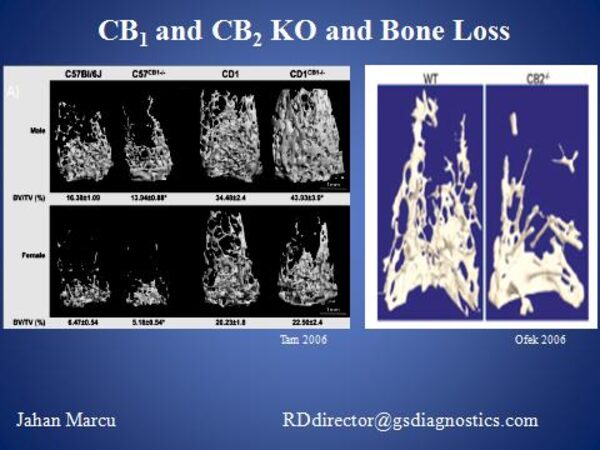Your Donation Helps to Educate Others by Keeping Cannabis Nation News On the Net!
The History of Cannabinoids and the Endocannabinoid System
Contributed by Dr. Jahan Marcu March 16, 2013 - As early as 5,000 years ago Cannabis was noted for its effects on the central nervous system. This often manifested in the form of pain relief, appetite stimulation, and sedation (Iverson, 2000). Evidence for the medicinal use of Cannabis goes back to the emperor Chen Nung (the father of Chinese agriculture), a discoverer of medicinal plants, who also taught his people how to cultivate grains. Chen Nung is believed to be the author of the oldest known Chinese pharmacopoeia, in which, he writes about the medical use of Cannabis for rheumatism, menstrual fatigue, malaria, constipation, and absentmindedness.
Medicinal Cannabis preparations were widely used in western medicine during the 19th century (at least 200 preparations). At the time it was recognized that preparations of Cannabis distributed through pharmacies were variable. As the active ingredient was not known, quality control was virtually impossible, and this is in part why the plant fell out of use. One practical issue was that the cannabis, cultivated in Morroco, China, India ,could take as long as a year to reach the west. And storage conditions were not optimal, in say Dutch sailing vessel from the 15th century.
During the Victorian era, many alkaloids were extracted from plants, for their unique properties. These plant chemists were successful because the alkaloids they were targeting are water soluble organic bases that form crystalline solids when combined with acids. Among the medicinal compounds isolated in the 19th century were quinine, morphine, and cocaine. These were major advances in plant chemistry. The molecules on the cannabis plant, however, are almost completely insoluble in water. The chemical nature of cannabinoids prevented early Victorian scientists from making efficient extracts of these polar compounds. The active ingredient, delta9-Tetrahydrocannabinol (Δ9-THC), was not isolated and identified until 1964(Mechoulam and Gaoni, 1965).
In the 1990s, researchers made discoveries essential for the establishment of the cannabinoid research field. By the end of the decade scientists discovered two distinct cannabinoid receptors (i.e., CB1 and CB2), isolated endogenous cannabinoids (e.g.,Anandamide and 2-Arachidonylglycerol), synthesized a cadre of ligands, and generated cannabinoid receptor knockout mice (i.e., CB1 KO) (Gerard et al., 1990; Matsuda et al., 1990; Zimmer et al., 1999). Efforts to identify and clone the CB1 receptor demonstrate that it is one of the most abundant proteins in the brain. Thus, cannabinoid receptors became an attractive target for drug development. The availability of synthetic THC and novel analogs has allowed researchers to begin characterizing the role of this neuronal G-protein coupled receptor (GPCR). The sum of all knowledge on how cannabinoid receptors and their ligands work together in mammals is referred to as the endocannabinoid system (ECS).
Today we know that cannabinoids are found on many plants, THC has not been found on plants, but the stuff of THC-the precurors, such as CBG were found on some of these plants. Additionally, cloves, black pepper also contain what is refferred to as a dietary cannabinoid. Beta-caryophyllene.
The reason we have a receptor of cannabinoids, is not because there is some plant out there which makes cannabiniods. That is just a qwuark of nature. We instructions for the building these receptors in genes because it is part of a larger system with a natural THC-like compound synthesized by our bodies.
What does the ECS do?
Eat: HIV/AIDS and is the basis for pure THC being available by prescription for the cancer and aids patients.
Less recognized but still promising are effects we can recognize; sleep, relax, references to sedation and pain relief.
Forget: Have you ever forgotten anything? Happened to me once and I am thankful for it because it may indicate I have a healthy brain with a reasonable amount of CBR activation…However, when you really think about, having a system to extinguish
Memories or information that is NOT useful or harmful, is just as important as remembering things that are useful. If I remember every face I saw on SEPTA this morning, my brain would burst, trying to remember all that information. This is basis for anecdotal reports and a call for clinical trials with cannabinodis for the treatment of PTSD—it used to be called battle fatigue, before that shell shock. (All quiet on the western front).
Protect: Cannabinoids protect neurons from excitotoxicity and other insults. In addition to being wonderful antioxidants, phytocannabinoids and some synthetics can reduce nerve damage in experimental assays involving animal brains being challenged with say nerve gas, blunt trauma, ischemia (heart attack).
A clinical endocannabinoid deficiency has been coined…which describes diseases such as fibromyalgia, migraines, and eating disorders—may have an underlying defect in cannabinoid receptors or endocannabinoid production.
Many uses:
convulsion, menstrual cramps, asthma, childbirth, throat infection,
cough, insomnia, migraine, opium withdrawal, appetite, diarrhea,
Etc….
In the last few years we have made the most astonishing discoveries…
And I believe the future of therapeutics, depends heavily on understanding this system.










